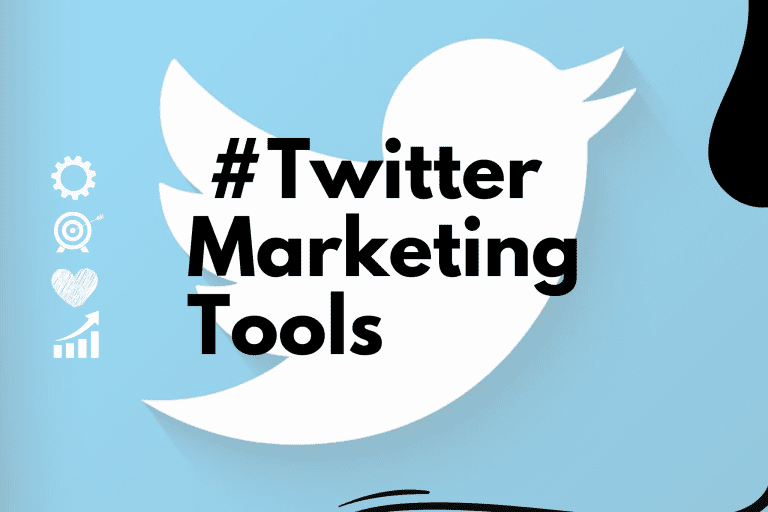Types of Content Marketing: A Comprehensive Guide
Content marketing is an essential part of any business strategy. By creating and sharing valuable and relevant content, businesses can attract and engage their target audience, establish themselves as industry experts, and ultimately drive profitable customer action. In this article, we will discuss the different types of content marketing that businesses can use to achieve their marketing goals.
What is Content Marketing?
Before we dive into the types of content marketing, let’s first define what content marketing is. Content marketing is a strategic approach to marketing that focuses on creating and distributing valuable, relevant, and consistent content to attract and retain a clearly defined audience — and ultimately, to drive profitable customer action. The goal of content marketing is to provide helpful, informative, and engaging content that solves problems or answers questions for the target audience. By doing so, businesses can build trust, establish authority, and build long-term relationships with their customers.
what comes under content marketing?
Content marketing can include a wide variety of tactics and formats that are used to create and distribute valuable and relevant content to attract, engage and retain a target audience. Here are some common examples of what comes under content marketing:
- Blog posts
- Infographics
- Videos
- Webinars
- Podcasts
- E-books
- Case studies
- White papers
- Social media posts
- Email newsletters
- Online quizzes and surveys
- Interactive tools and calculators
- User-generated content campaigns
- Thought leadership articles
- Product or service reviews
- Testimonials and success stories
- How-to guides and tutorials
- FAQs and knowledge bases
- Memes and gifs
- Live events and conferences
Content marketing can involve a combination of these tactics, depending on the marketing goals and target audience. The key is to create and distribute content that provides value to the audience, builds trust, and encourages them to take the desired action.
Types of Content Marketing
Blogging
Blogging is a popular form of content marketing that involves writing articles on a regular basis to share insights, opinions, and information with your audience. Blogs can be used to drive traffic to your website, establish yourself as an authority in your industry, and educate your audience about your products or services. Blogs can be written in various formats, such as how-to guides, listicles, opinion pieces, and more. They can also be used to promote other types of content, such as infographics, videos, and webinars.
Infographics
Infographics are a visual representation of information, data, or knowledge that can be easily understood by your audience. They are a great way to present complex information in a visually appealing format, and they can be shared on social media, blog posts, and other digital channels to drive engagement and brand awareness. Infographics can be used to present statistics, facts, and other types of data in an easily digestible format. They are also great for summarizing longer pieces of content, such as whitepapers or reports.
Video
Video is an engaging and effective way to deliver your message to your audience. It can be used to showcase your products or services, share customer testimonials, or provide how-to guides and tutorials. Video can be shared on your website, social media, and other digital channels, and it can help you connect with your audience on a more personal level. Video can be created in various formats, such as explainer videos, product demos, customer stories, and more.
Podcasts
Podcasts are audio recordings that can be downloaded and listened to by your audience. They are a great way to share insights and knowledge about your industry, and they can be used to establish yourself as an expert in your field. Podcasts can be shared on your website, social media, and other digital channels, and they can be a great way to connect with your audience on a deeper level. Podcasts can be created in various formats, such as interviews, roundtable discussions, and monologues.
Webinars
Webinars are live, interactive events that allow you to connect with your audience in real-time. They can be used to provide educational content, product demonstrations, or thought leadership discussions. Webinars can be shared on your website, social media, and other digital channels, and they can help you establish your authority and expertise in your industry. Webinars can be created in various formats, such as live Q&A sessions, panel discussions, and product demos.
eBooks
eBooks are longer-form content pieces that can be used to provide in-depth information on a particular topic. They can be used to educate your audience about your industry, products or services, or to provide solutions to problems they may have. Ebooks can be shared on your website, social media, and other digital channels, and they can be a great way to generate leads and establish yourself as an expert in your field. Ebooks can be created in various formats, such as step-by-step guides, case studies, and research reports.
Whitepapers
Whitepapers are authoritative reports or guides that provide in-depth information on a particular topic. They are often used to provide research or analysis on a particular subject and can be used to support your marketing efforts. Whitepapers can be used to educate your audience, build trust and credibility, and generate leads. Whitepapers can be shared on your website, social media, and other digital channels, and they can be a great way to establish yourself as an expert in your field.
Case Studies
Case studies are in-depth analyses of how your product or service has helped a customer solve a particular problem. They are a great way to showcase your products or services in action, and they can be used to build trust and credibility with your audience. Case studies can be shared on your website, social media, and other digital channels, and they can be a great way to generate leads and drive sales.
Social Media
Social media is a great way to share all types of content with your audience. Whether it’s blog posts, infographics, videos, or webinars, social media can be used to distribute your content and drive engagement with your audience. Social media platforms like Facebook, Twitter, LinkedIn, and Instagram can be used to connect with your audience, build brand awareness, and drive traffic to your website.
Email Marketing
Email marketing is a great way to share your content with your audience on a regular basis. Whether it’s a newsletter, a promotional email, or a follow-up email after a purchase, email can be used to build long-term relationships with your customers. Email marketing can be used to distribute your content, promote your products or services, and provide customer support.
Purpose of Content Marketing
The purpose of content marketing is to attract, engage, and retain a target audience by creating and distributing valuable, relevant, and consistent content. The ultimate goal of content marketing is to drive profitable customer action, whether that is in the form of increased website traffic, lead generation, sales, or customer loyalty.
Unlike traditional advertising, which interrupts a consumer’s attention with a sales pitch, content marketing aims to provide value to the audience through educational, informative, or entertaining content. By providing value, businesses can build trust with their audience, establish themselves as thought leaders in their industry, and ultimately drive more conversions.
Content marketing is an effective way for businesses to build brand awareness, generate leads, and establish long-term customer relationships. By creating content that resonates with their target audience, businesses can attract more high-quality traffic to their website, and establish themselves as an authority in their field.
Moreover, content marketing allows businesses to differentiate themselves from their competitors and showcase their unique value proposition. By providing value to their audience, businesses can stand out in a crowded marketplace and connect with their ideal customers on a deeper level.
In short, the purpose of content marketing is to build long-term relationships with customers by creating and distributing content that provides value, establishes thought leadership, and ultimately drives profitable customer action.
Conclusion
Content marketing is a critical part of any business strategy. By creating and sharing valuable, relevant, and consistent content, businesses can attract and engage their target audience, establish themselves as industry experts, and ultimately drive profitable customer action. In this article, we have discussed the different types of content marketing that businesses can use to achieve their marketing goals. From blogging and infographics to video and email marketing, there are many types of content marketing to choose from. The key is to understand your audience and create content that meets their needs and interests.
By using a variety of content marketing types, businesses can reach their target audience at different stages of the buying process, from awareness to consideration to purchase. Whether it’s through blogs, infographics, videos, webinars, ebooks, or social media, there is a content marketing strategy that can help businesses achieve their marketing goals. So start creating valuable content today and see how it can help you grow your business!
Read More: Mastering The Art Of Social Media Marketing: Proven Strategies For Success

Hi, this is Javed Aslam. I hope all is well on your end.
I am a professional content writer and copywriter with more than four years of experience. During these years, I have worked with multiple clients and organizations I made the projects successful. If you are looking for content writing and copywriting services, contact me. Thanks.







